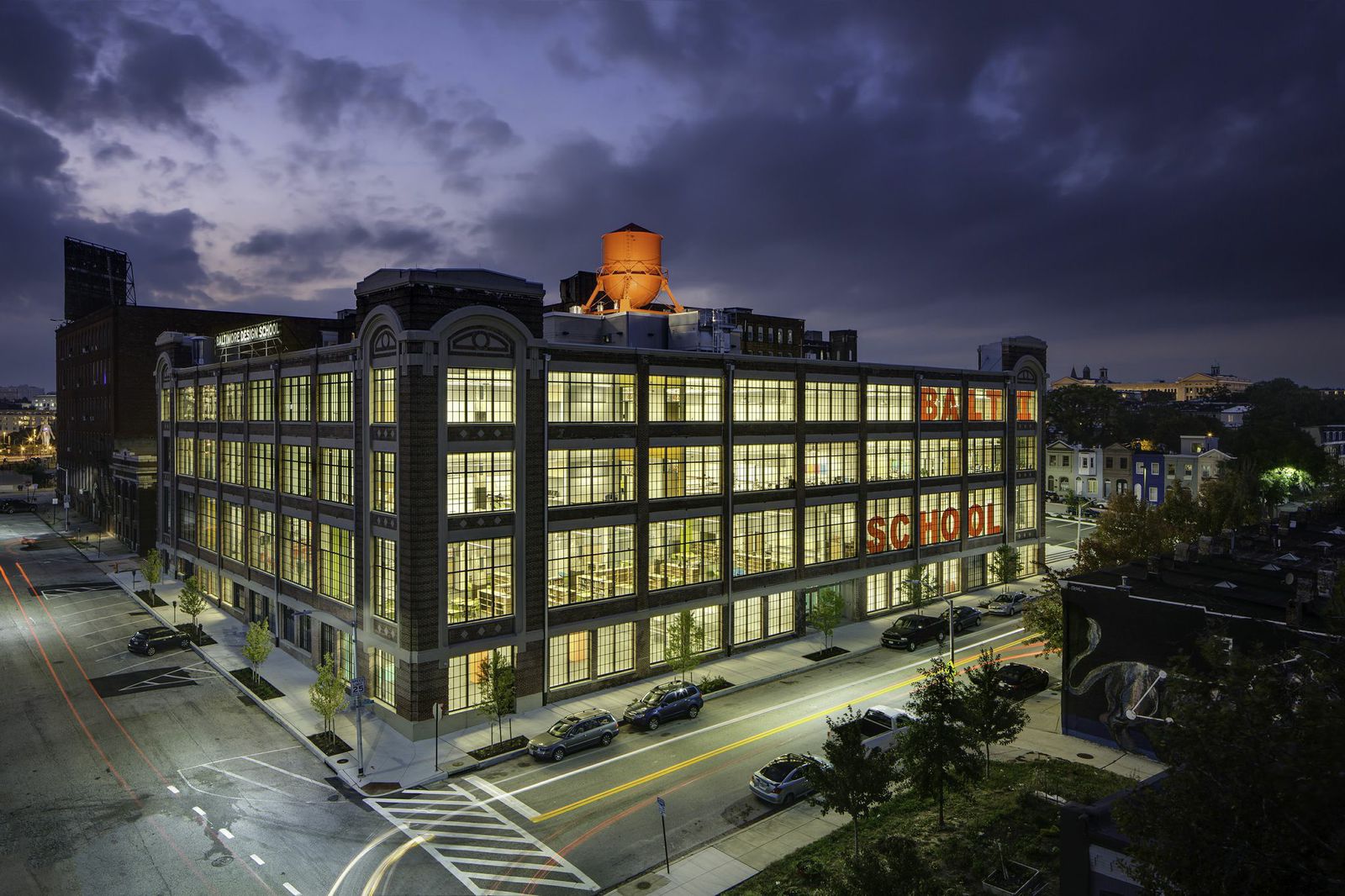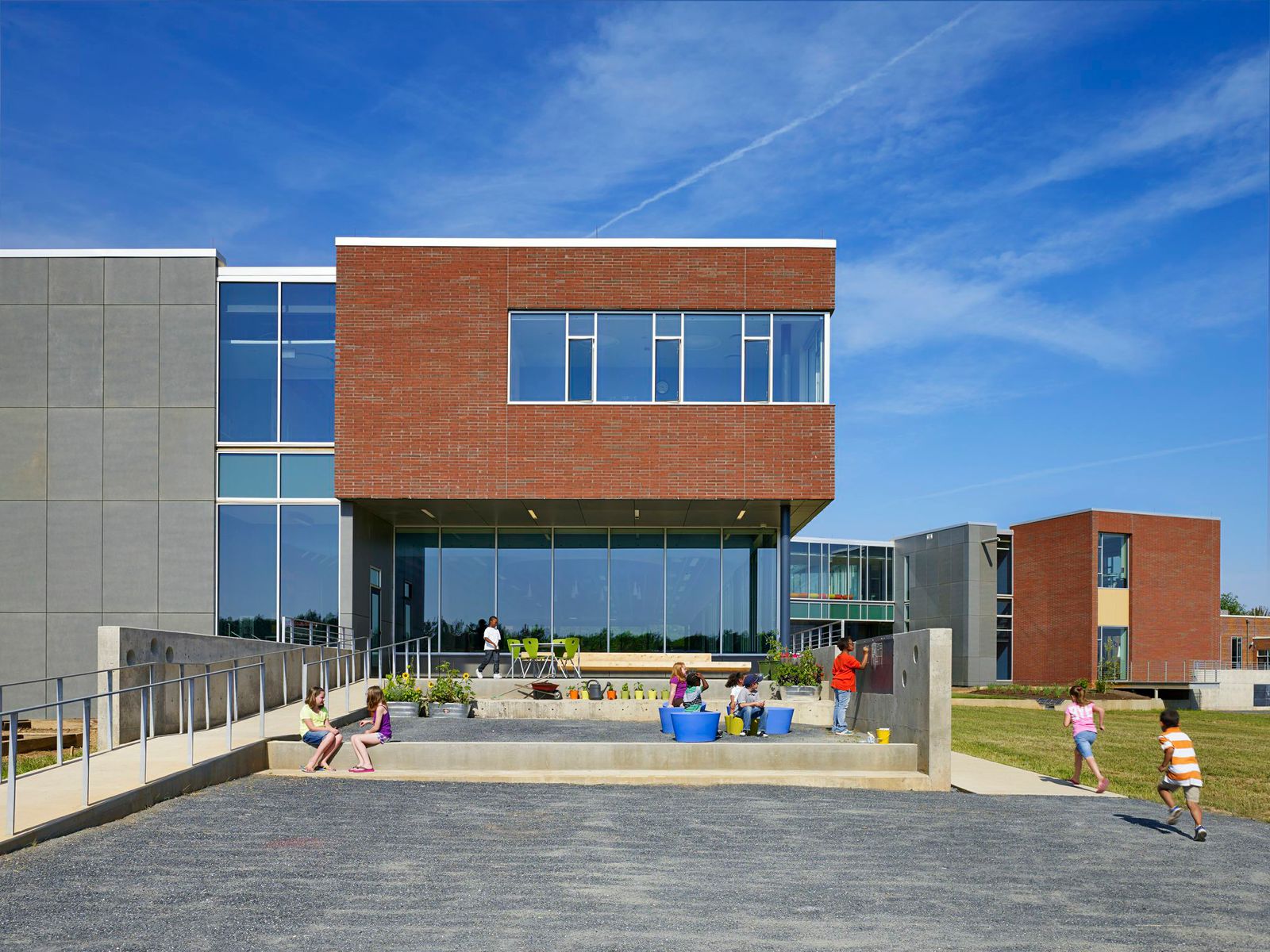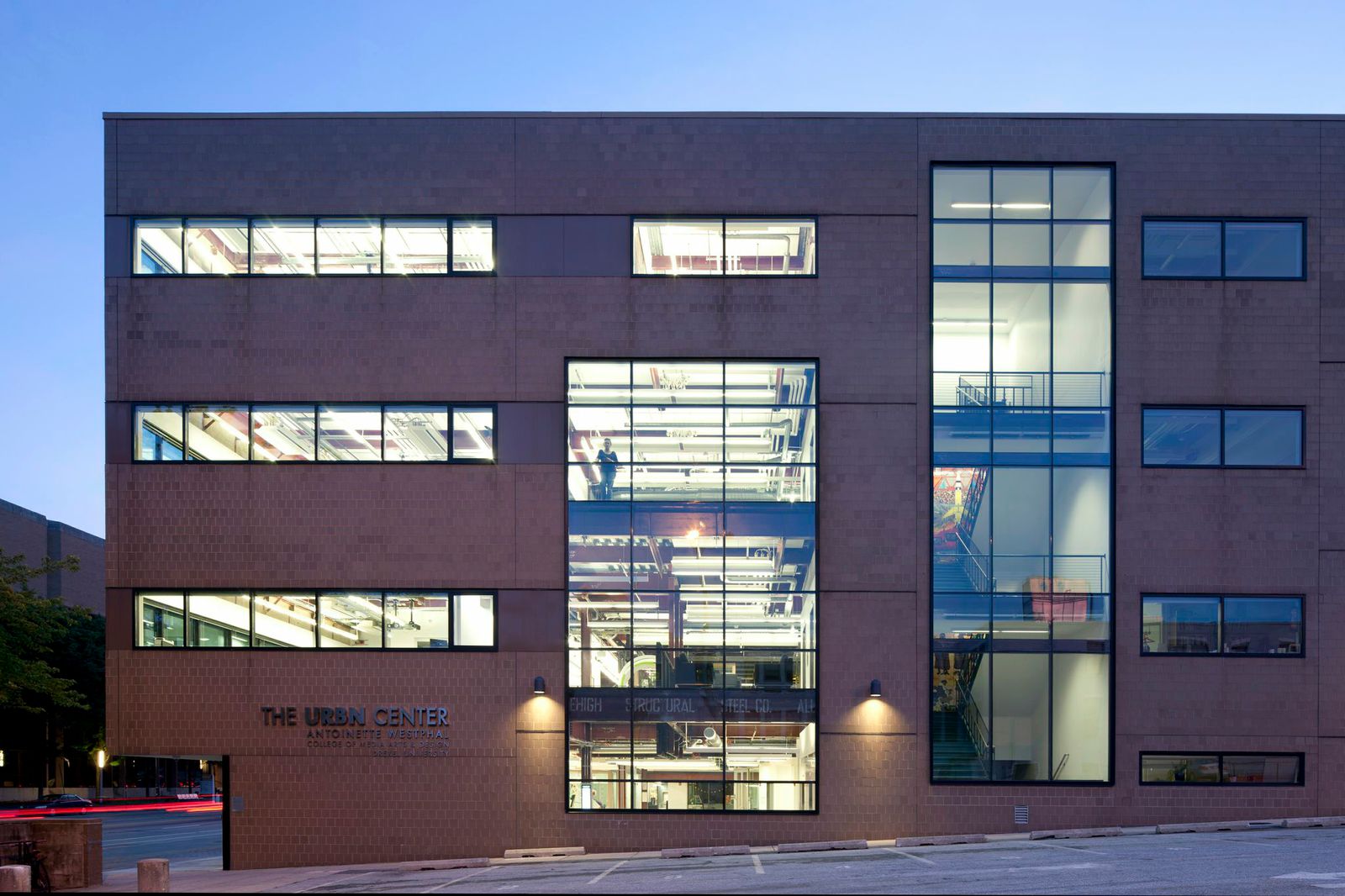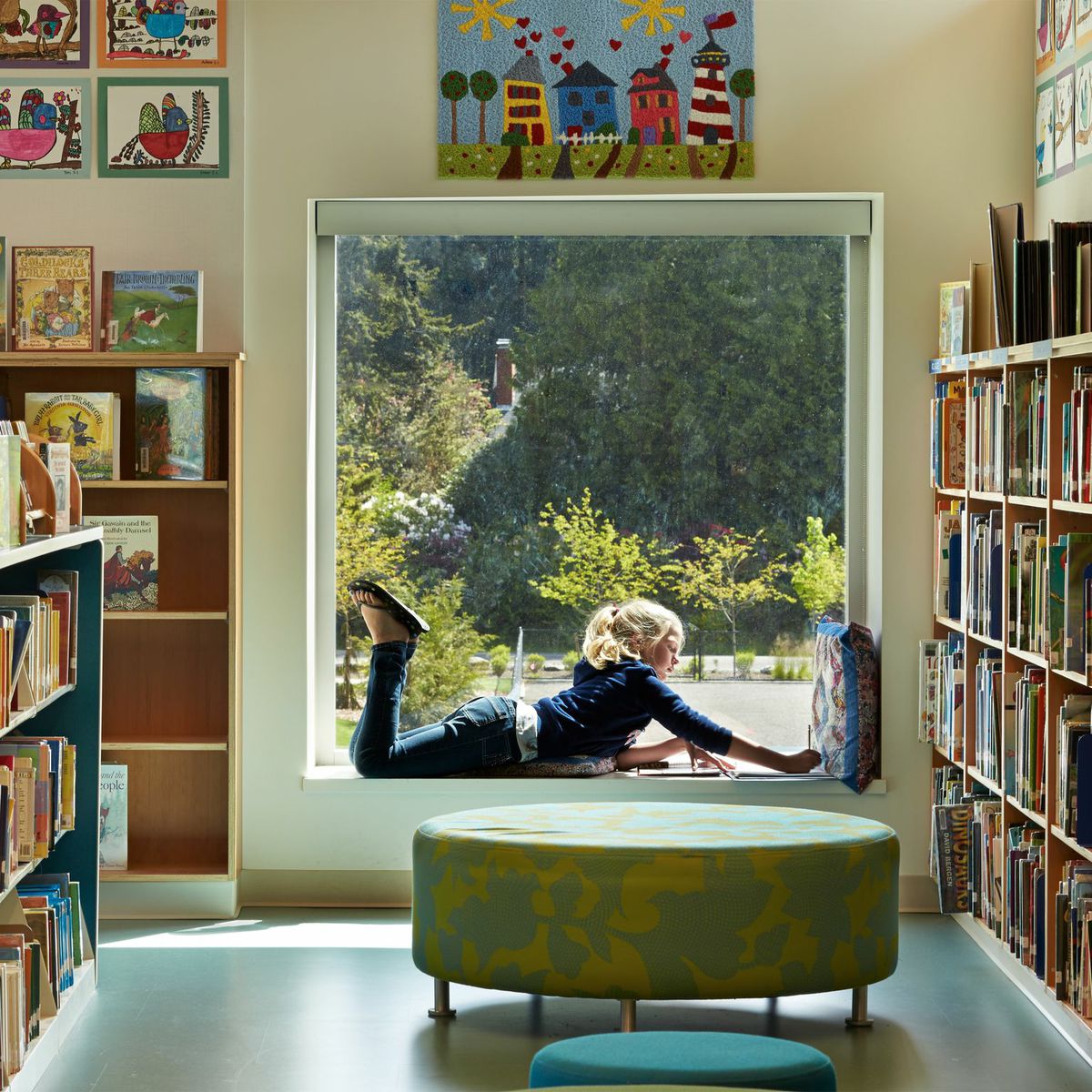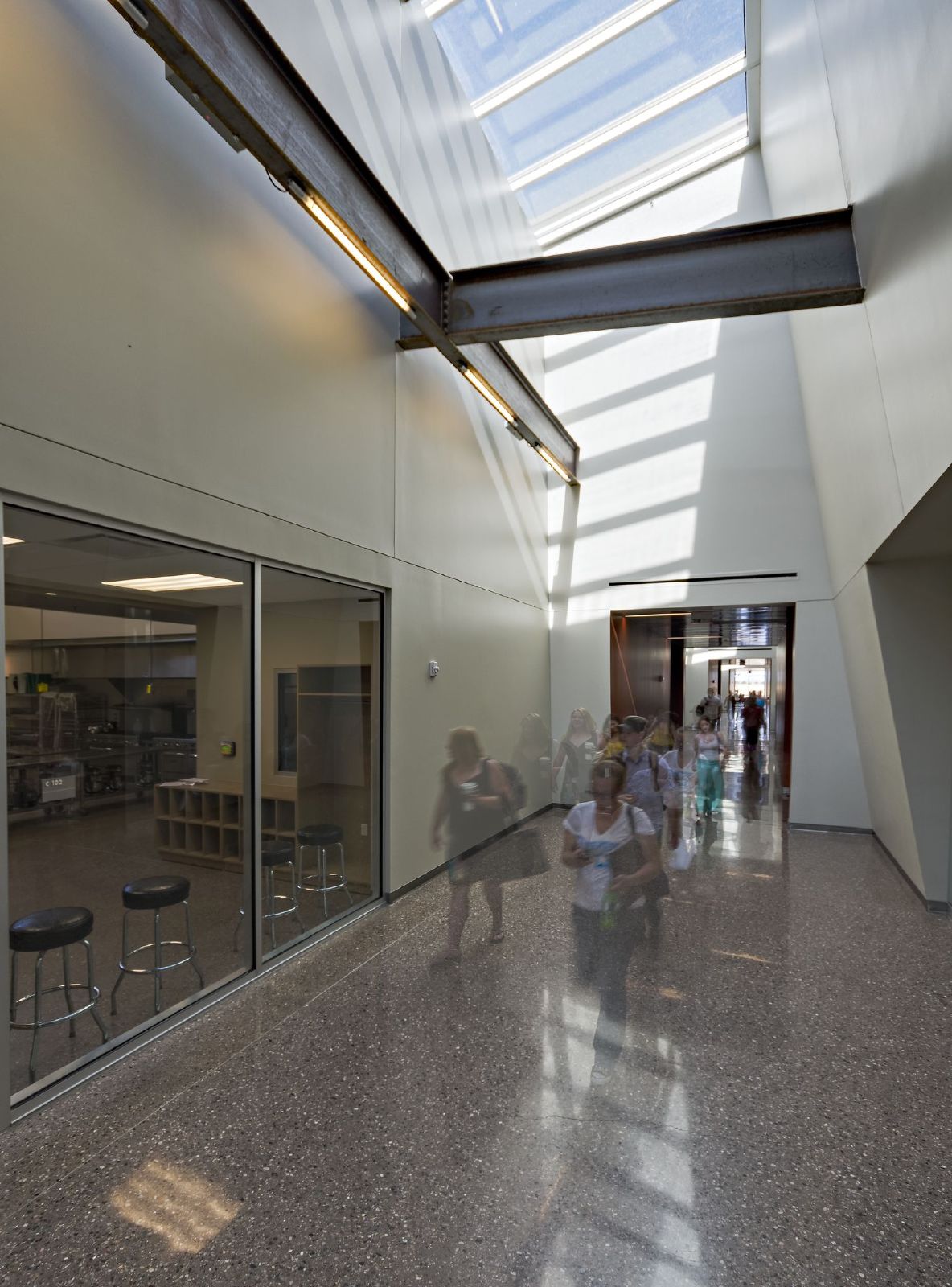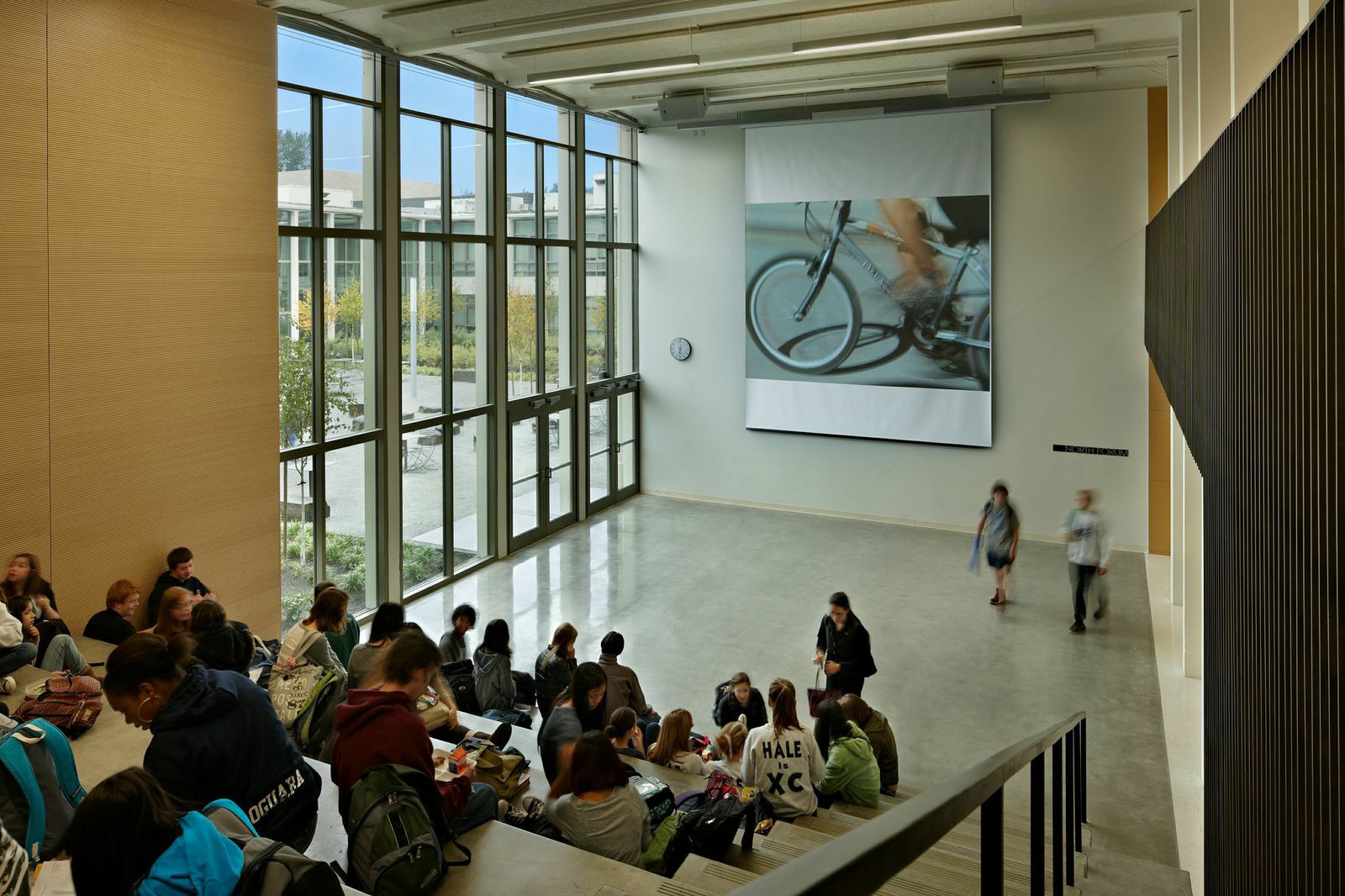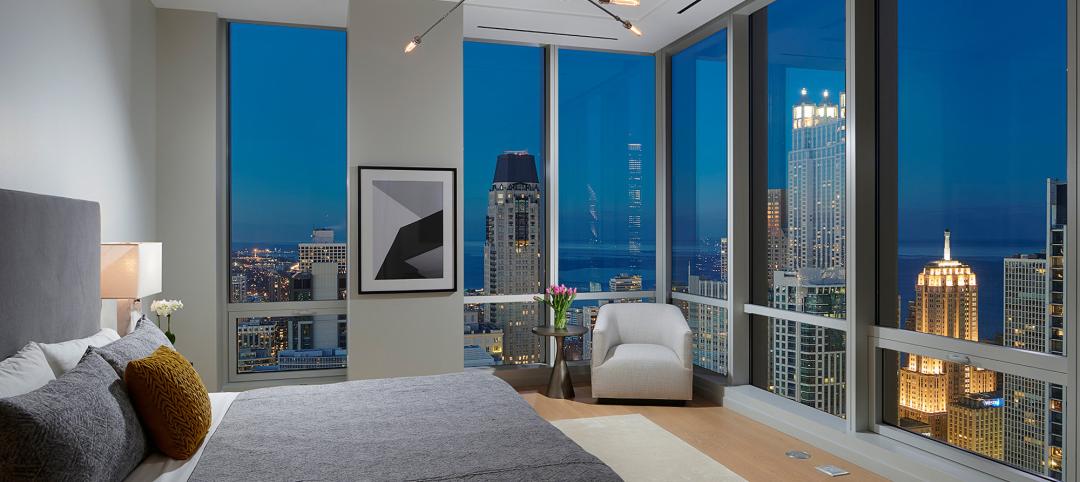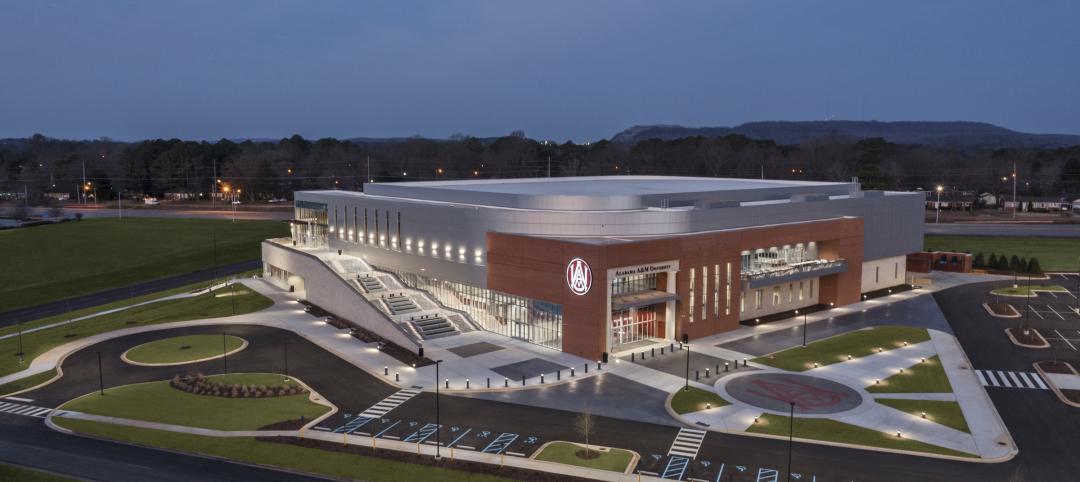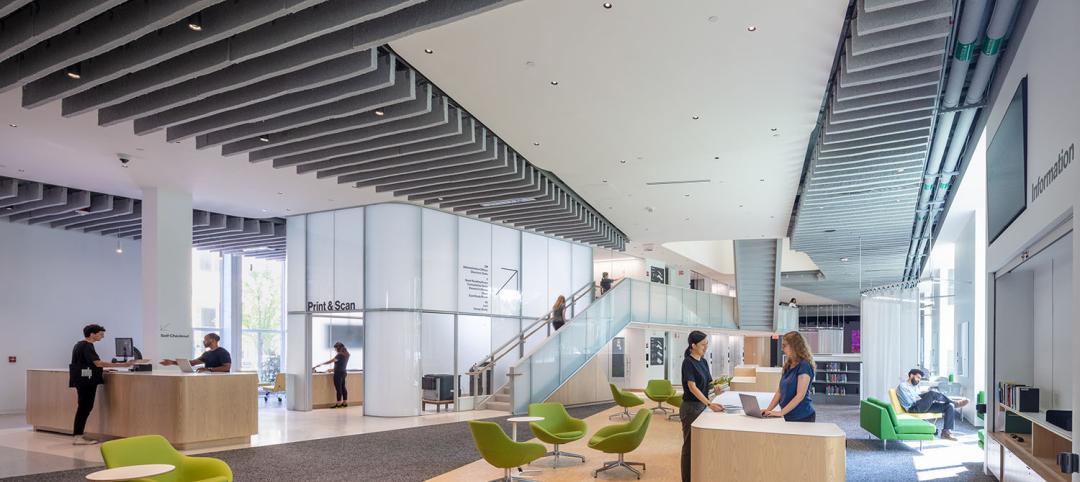The American Institute of Architects (AIA) Committee on Architecture for Education (CAE) has selected 11 educational and cultural facilities for this year’s CAE Educational Facility Design Awards.
The CAE Design Excellence Award honors educational facilities that the jury believes should serve as an example of a superb place in which to learn, furthering the client's mission, goals and educational program while demonstrating excellence in architectural design.
These projects exemplify innovation through the client's educational goals through responsive and responsible programming, planning and design. Function and surrounding regional and community context are valued as part of the planning and design process as well as sustainability.
The 2014 CAE Educational Facility Design Awards jury includes: John R. Dale, FAIA (Chair), Harley Ellis Devereaux; Claire Gallagher, Assoc. AIA, Georgian Court University, School of Education; Fred Dust, IDEO; Dutch MacDonald, AIA, MAYA Design and Marsha Maytum, FAIA, Leddy Maytum Stacy Architects.
Baltimore Design School; Baltimore
Ziger/Snead Architects
Photo credit: Karl Connolly & Matthew Rouse
Photo credit: Karl Connolly & Matthew Rouse
Photo credit: Karl Connolly & Matthew Rouse
Photo credit: Karl Connolly & Matthew Rouse
Photo credit: Karl Connolly & Matthew Rouse
Photo credit: Karl Connolly & Matthew Rouse
The site before Ziger/Snead Architects transformed it into the Baltimore Design School. Photo credit: Karl Connolly & Matthew Rouse
Baltimore Design School is a new Baltimore City Public combined middle and high school with a focus on fashion, architecture, and graphic design. The new school is created from an abandoned historic factory building. The building’s transformation from blight to a state-of-the-art facility within the confines of a minimal budget demonstrates the power of design through best practices for historic renovation, adaptive reuse, educational design, and sustainable design. A driving force in creating the school was the desire to develop creativity and design-informed critical thinking skills for public school students.
Buckingham County Primary & Elementary Schools at the Carter G. Woodson Education Complex; Dillwyn, VA
VMDO Architects, P.C.
Photo credit: Alan Karchmer
Photo credit: Alan Karchmer
Photo credit: Alan Karchmer
Photo credit: Alan Karchmer
Photo credit: Alan Karchmer
Photo credit: Alan Karchmer
Photo credit: Alan Karchmer
Two Virginia mid-century schools are transformed into a cutting-edge, holistic learning environment for K-5 students with the aim to promote connectivity, creativity, health, and well-being. Evidence-based healthy design principles – integrated in the campus landscape and co-created by the client, architect, and a team of public health researchers – promote healthy eating, nutrition education, physical activity, and well-being as a response to the national childhood obesity epidemic. The campus works to unlock the health and learning potential of 21st-century students while fostering design-research partnerships that re-define sustainability, human health, and professional collaboration.
Drexel University College of Media Arts and Design (CoMAD) URBN Center; Philadelphia
MSR (Meyer, Scherer & Rockcastle, Ltd.)
Images © Lara Swimmer 2014
Images © Lara Swimmer 2014
Images © Lara Swimmer 2014
Images © Lara Swimmer 2014
Images © Lara Swimmer 2014
Images © Lara Swimmer 2014
The respectful repurposing of a landmark Venturi, Scott Brown decorated shed provides a new home for Drexel University’s College of Media Arts and Design. Key goals driving the project include bringing together disparate departments in one location and encouraging cross-collaboration between disciplines. To transform the former 130,000 square-foot office building and 13,000 square-foot annex, the designers embraced the realities of the shed—a cost-effective, four-story commercial box. The design concept focuses on respecting the original intent, making more with less, offering adaptable spaces for learning, and providing opportunities for learning through presentation.
University of Chicago Child Development Center – Stony Island; Chicago
Wheeler Kearns Architects
Photo credit: Daniel Wicke/W
Photo credit: Steve Hall/Hedrich Blessing
Photo credit: Steve Hall/Hedrich Blessing
Photo credit: Steve Hall/Hedrich Blessing
Photo credit: Steve Hall/Hedrich Blessing
Photo credit: Steve Hall/Hedrich Blessing
Photo credit: Steve Hall/Hedrich Blessing
Photo credit: Steve Hall/Hedrich Blessing
When faced with the question "How do you design a day care for the children of future Nobel laureates?", one approach seemed promising. Instead of creating another place dominated by primary colors and synthetic play equipment, children could be offered an opportunity to discover natural phenomena in the natural world. Discovering first principles first-hand surrounded by minimally processed natural materials. Consequently, the design emphasizes the natural landscape over the built-one, centered around two playscapes with a footprint larger than the building itself. The playscapes conceptually graft onto the historic Frederick Law Olmstead landscape located across the street in Jackson Park. Materials constructed by nature either from the atmosphere (trees, plants, wood) or from the earth (boulders, rocks, sand) dominate.
Wilkes Elementary School; Bainbridge Island, WA
Mahlum
Photo credit: Benjamin Benschneider
Photo credit: Benjamin Benschneider
Photo credit: Benjamin Benschneider
Photo credit: Benjamin Benschneider
Photo credit: Benjamin Benschneider
Photo credit: Benjamin Benschneider
Photo credit: Benjamin Benschneider
Wilkes Elementary School was designed to support dynamic styles of teaching and learning. Classrooms are located at the heart and linked on each end, providing a circulation pattern that prevents both the feeling and effect of isolation. Clusters of classrooms break down the scale and create four intimate learning communities. This arrangement also fosters collaboration and connectivity, and creates opportunities for variation in scales of learning - from multi-classroom gatherings, to intimate individual experiences. Wilkes addresses the needs of the whole child, so that powerful learning happens everywhere.
Central Arizona College, Maricopa Campus; Maricopa, AZ
SmithGroupJJR
Photo credit: SmithGroup JJR
Photo credit: SmithGroup JJR
Photo credit: SmithGroup JJR
Photo credit: SmithGroup JJR
Photo credit: SmithGroup JJR
Photo credit: SmithGroup JJR
Photo credit: SmithGroup JJR
Photo credit: SmithGroup JJR
Known for its history as a pre-railroad stagecoach town, the town of Maricopa has balanced its agricultural and Native American identities for the past century. Most recently Maricopa, a community 40 miles south of Phoenix, has been chronicled by the New York Times as a bedroom community boomtown gone bust. Central Arizona College has made an investment in the community and is betting on its future. This campus represents a glimmer of hope in an area struck by the national recession.
Coastline Community College, Newport Beach Campus; Newport Beach, CA
LPA, INC
Photo credit: Costea Photography, Inc., courtesy of LPA, Inc.
Photo credit: Costea Photography, Inc., courtesy of LPA, Inc.
Photo credit: Costea Photography, Inc., courtesy of LPA, Inc.
Photo credit: Costea Photography, Inc., courtesy of LPA, Inc.
Photo credit: Costea Photography, Inc., courtesy of LPA, Inc.
Photo credit: Costea Photography, Inc., courtesy of LPA, Inc.
Photo credit: Costea Photography, Inc., courtesy of LPA, Inc.
The new interdisciplinary Newport Beach Campus provides a total of approximately 66,800 square feet to Coastline Community College, as well as hardscape and landscape. The project also includes construction of a 260-space, on-site, parking lot directly adjacent to the structure. Key sustainable features, such as storm water management, natural ventilation, green roofs, living walls, maximized daylight and views of the ocean, are highlighted to achieve LEED Gold rating. The project exceeds CA Title 24 energy code by 33%.
James B. Hunt Jr. Library at North Carolina State University Raleigh, NC
Architect: Clark Nexsen
Associated Firm: Snohetta
Photo credit: Clark Nexsen, Snohetta
Photo credit: Clark Nexsen, Snohetta
Photo credit: Clark Nexsen, Snohetta
Photo credit: Clark Nexsen, Snohetta
Photo credit: Clark Nexsen, Snohetta
Photo credit: Clark Nexsen, Snohetta
Photo credit: Clark Nexsen, Snohetta
Large open spaces connect all floors of the library, and the use of stairs is emphasized to ensure an interactive and social environment in-between more focused study areas. Designed to LEED Silver requirements, the building features abundant natural light and expansive views of the nearby lake. Fritted glass and a fixed external aluminum shading system help diminish heat gain and maximize views and ambient natural light. Ceiling-mounted active chilled beams and radiant panels provide heating and cooling. Rain gardens and green roofs manage storm water.
Nathan Hale High School Modernization; Seattle
Mahlum
Photo credit: Benjamin Benschneider
Photo credit: Benjamin Benschneider
Photo credit: Benjamin Benschneider
Photo credit: Benjamin Benschneider
Photo credit: Benjamin Benschneider
Photo credit: Benjamin Benschneider
Photo credit: Benjamin Benschneider
Nathan Hale is a progressive, public high school known for its collaborative, presentation-based curriculum and strong community connection. This significant facility modernization and addition to the 1960’s structure creates a flexible teaching facility that puts student life at the center of the school and unites the campus community. The design allows the building to breathe fresh air and daylight while respecting the existing structural rhythm. Light-filled halls and classrooms, as well the building transparency, express the school’s values and provide a healthy, inspirational environment.
PAVE Academy Charter School; Brooklyn, NY
Mitchell | Giurgola Architects, LLP
Photo credit: Albert Vecerka/Esto
Photo credit: Albert Vecerka/Esto
Photo credit: Albert Vecerka/Esto
Photo credit: Albert Vecerka/Esto
Photo credit: Albert Vecerka/Esto
Photo credit: Albert Vecerka/Esto
Photo credit: Albert Vecerka/Esto
PAVE Academy is a 450-seat K-8 public charter school located on an isolated corner lot in the Red Hook section of Brooklyn. The design of the school was informed by the PAVE leadership team whose goals included creating a community friendly school that would support significant parent involvement – essential to student success – and the needs of a particularly high-needs population living in poverty. Children arrive early for a quiet breakfast and stay well into the afternoon with learning and play to fill a void many face at home.
Raisbeck Aviation High School; Tukwila, WA
Bassetti Architects
Photo credit: Ben Schneider Photography
Photo credit: Ben Schneider Photography
Photo credit: Ben Schneider Photography
Photo credit: Ben Schneider Photography
Photo credit: Ben Schneider Photography
Photo credit: Ben Schneider Photography
Photo credit: Ben Schneider Photography
Raisbeck Aviation High School was conceived as a response to Highline School District's proximity to the aviation industry, a deep desire to give students access to college and engineering professions, and an educational vision that melds hands-on, project-based learning with academic rigor. The new 400-student STEM (Science, Technology, Engineering, and Math) school enables students to flourish through co-location with the Museum of Flight and immersion in aerospace and aviation. The design supports this program physically, visually, and symbolically with project labs for aircraft and robotics construction, state-of-the-art science labs, classrooms, and a multi-purpose gathering space. Even the image of the school reflects its mission with its streamlined, carefully crafted form, inspired by the leading edge of a wing.




